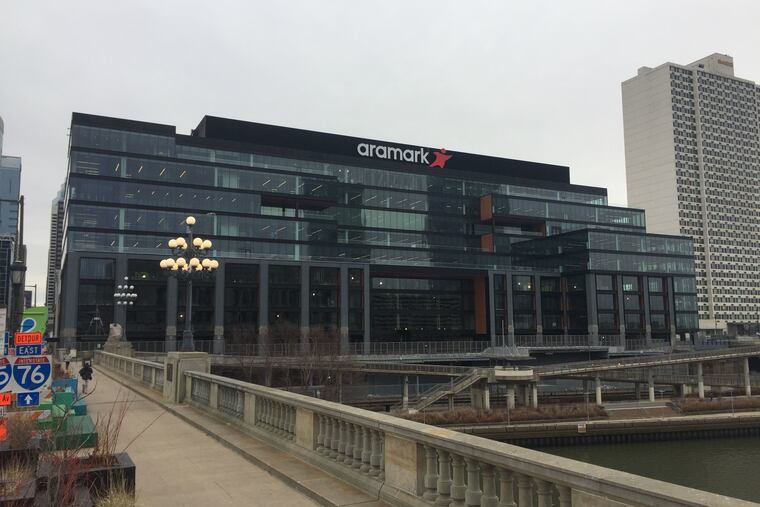Aramark tweaks top bosses’ pay structure to please shareholders, but that may not be enough
The Philadelphia food-service giant responded to criticism by shareholders on executive pay by clarifying some components and eliminating others.

Aramark tweaked the pay structure of its top executives, including the expansion of clawback provisions, spurred by investor feedback.
The move comes a year after the company received lukewarm shareholder response for the pay packages of its top bosses. While corporate governance experts praised the Philadelphia-based food and facilities services provider’s engagement with investors, they said Aramark hasn’t gone far enough in executive pay reform.
“The company’s decisions to adopt majority voting in director elections, to broaden its disclosure of sustainability, diversity and cyber risks, and to expand the scope of its clawback policy are in line with corporate governance best practices,” Rosemary Lally, editor at the Council of Institutional Investors in Washington, said Tuesday.
"But, it looks like the board may not have gone far enough in reforming its executive compensation.” Lally said, citing a report by Institutional Shareholder Services, an advisory firm. Even though CEO Eric J. Foss’ total pay declined in 2018 to $16 million from $16.3 million the year before because of a lower annual incentive, it remained high relative to peers, according to the shareholder advisory firm. In particular, the advisory firm pointed to $250,000 for personal use of the company aircraft.
Aramark, which recently moved 1,200 Center City employees to its new headquarters along the Schuylkill River at Market Street from the Aramark Tower at 1101 Market St., defended its practices.
“The compensation of our entire management team is tied directly to the company’s performance and designed to reward achieving sustainable growth" while establishing incentives for future performance, the company said. “As described in our proxy, we have a rigorous and transparent process to carefully set fair, equitable, and competitive pay.”
Aramark’s annual meeting for the fiscal year ended Sept. 30 is scheduled for Jan. 30 at the Rittenhouse Hotel in Center City. Shareholders are again being asked to vote on the company’s nonbinding “say on pay” proposal.
Last year, only 50.7 percent of the votes cast were in favor of the pay packages. That put Aramark in rare company, among 6 percent of Russell 3000 index members whose say-on-pay proposals won the support of 50 percent to 70 percent of votes cast, according to Semler Brossy, an executive compensation consulting firm with offices in New York and Los Angeles. Only 2.7 percent of say-on-pay proposals at members of the index received less than 50 percent of the vote last year.
After that poor showing, the Aramark “board recognized that we needed to conduct an even more comprehensive outreach program to better understand our shareholders’ perspectives on our compensation program,” according to the company’s current proxy statement. The board reached out to shareholders representing 80 percent of its shares and met with shareholders representing 65 percent of its shares.
In response to what it heard, Aramark eliminated a portion of Foss’s pay that was based on total shareholder return outperformance compared with a set of peers, cut part of the company’s annual incentive plan, disclosed 2019 annual incentive plan targets, and expanded its clawback policy to cover more than 165 executives. The policy allows the company to attempt to recoup incentive compensation that was paid based on misstated financial results.
Patricia Q. Connolly, executive director of the Raj & Kamla Gupta Governance Institute at Drexel University’s LeBow College of Business, praised the pay changes at Aramark and said they generally represent a shift toward longer-term incentives. Another positive is that the board engaged with shareholders, not always the practice at large corporate boards, she said.
By adopting majority voting for directors, which means that even in uncontested elections board nominees must receive a majority of votes cast to win a seat, Aramark is following a long-term trend that most of the nation’s most prominent companies have already adopted.
“It’s just good governance," said Connolly.